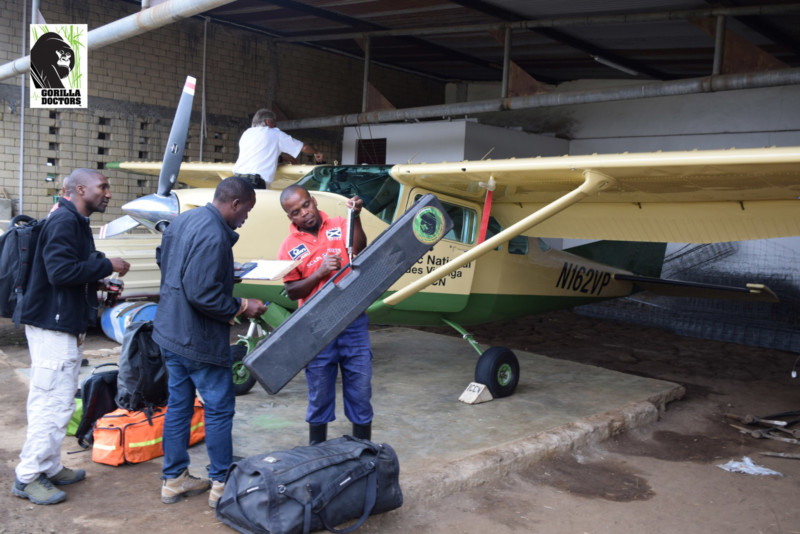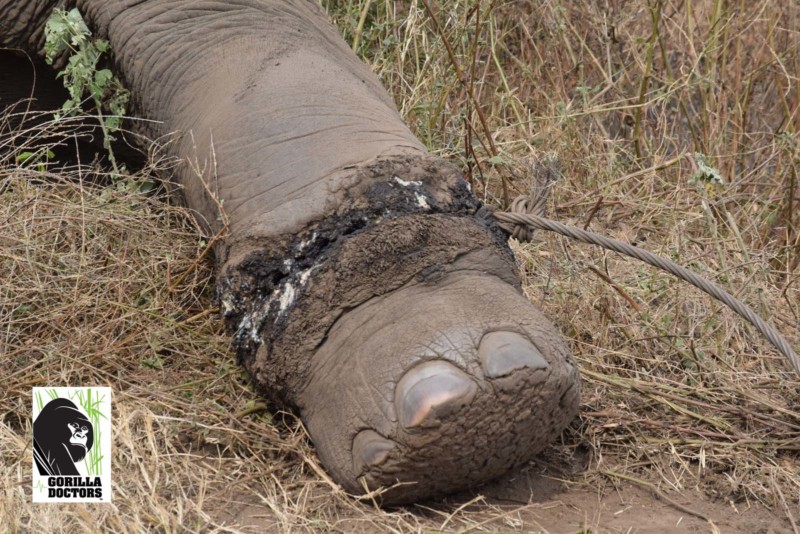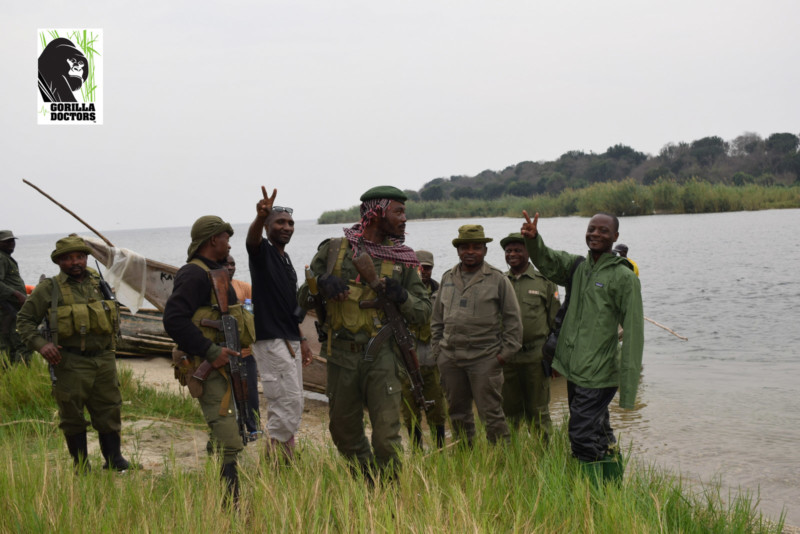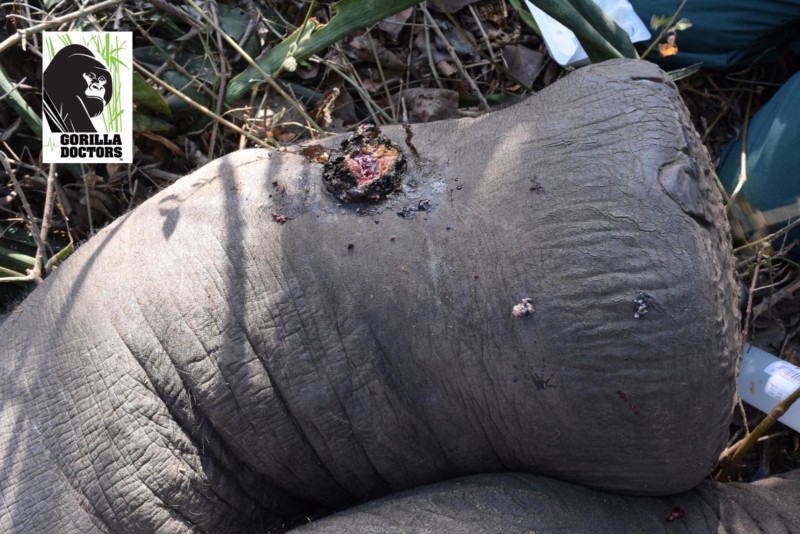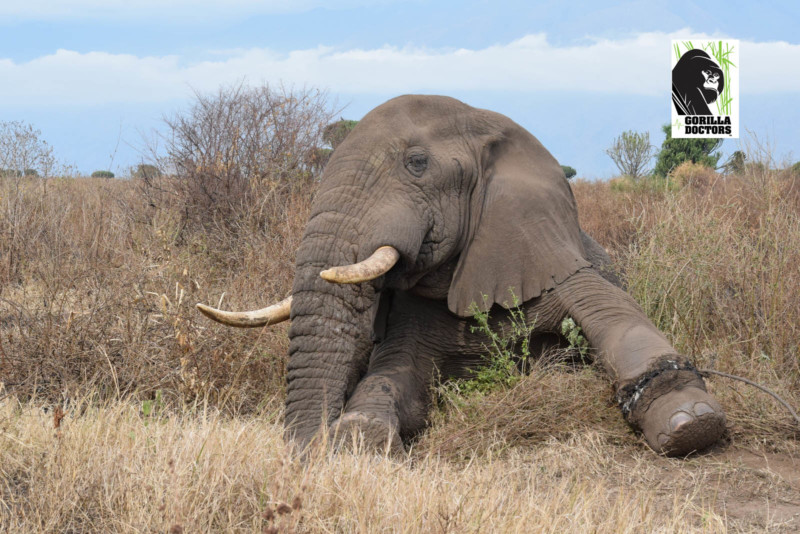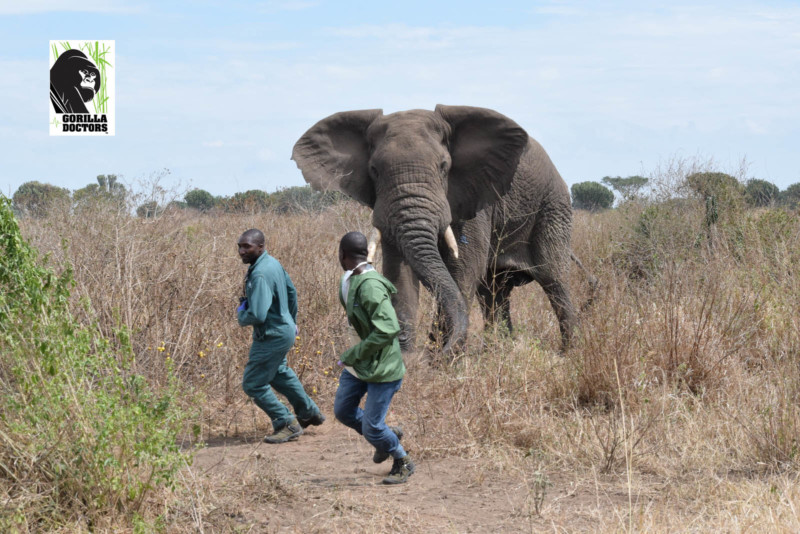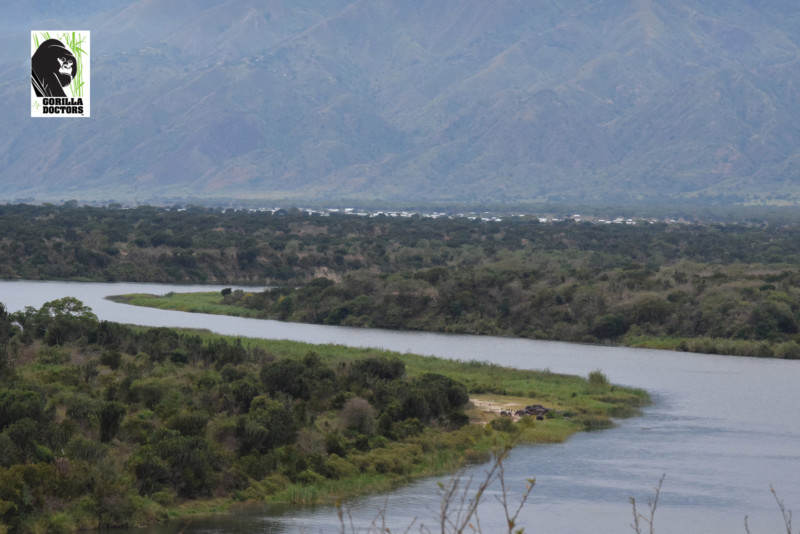Gorilla Doctors Treat Two Wounded Elephants
By Gorilla Doctors Staff on Tuesday, March 5th, 2019 in Blog.While our primary work is saving gorillas, central to our mission is a ‘One Health’ approach – understanding that the health of people, wildlife and ecosystems are inextricably linked – so when the security team from the Virunga National Park in DR Congo contacted us about an adult male elephant with a snare, our veterinary team mobilized within 24 hours.
Elephant Intervention(s): Field Report from Drs. Eddy and Martin
Virunga National Park
Democratic Republic of Congo
February 21 – 25, 2019
February 21 – Gorilla Doctors receives a report from anti-poaching patrollers that they had seen a wild bull elephant with a huge wire cable (the type used to pull a vehicle) embedded in his left front leg with a small stick attached to the free end. He was visibly limping. He was first observed the previous day, so rangers increased their monitoring as this wounded individual was even more vulnerable to poachers.
February 22 – Gorilla Doctors’ veterinarians, Drs. Eddy Kambale Syaluha and Martin Kabuyaya travel from Goma to Rumangabo to meet-up with the intervention team.
February 23 – The intervention team enters the forest and locates the elephant feeding in a swampy area, staying cool in the water. Drs. Eddy and Martin prepare the anesthetic drugs and wait for an opportunity to dart him.
As the elephant left the swamp, he moved very quickly on a path away from the team, disappearing into thick bush. They tracked his movements by following a trail of blood on the vegetation and soon found themselves faced with three elephants. One of the three was visibly limping so the team followed the elephant and made their first dart attempt at 2:35PM. The second dart attempt at 2:58PM was successful and the elephant was anesthetized within 14 minutes. Upon approach they realized it was a different individual than the bull with the snare and that this elephant had a deep bullet wound in his hind left foot just above the toes.
With the elephant fully anesthetized, Drs. Eddy and Martin cleaned the wound with betadine, administered antibiotics, collected blood samples and treated a second, superficial wound on his right thigh. This elephant’s leg was mildly swollen and they attempted to remove the bullet with forceps but it was too deep and they were unable to locate it within the leg. Upon administering the anesthetic reversal drug, the elephant was back on his feet and with his herd within minutes.
February 24 – Heading out early in the morning the intervention team began their search for the elephant suffering from the snare. It was not until late evening that he was located so they had to wait until the next day to attempt treatment.
February 25 – Getting an early start, they found the elephant feeding at 7:15AM. Drs. Eddy and Martin had only one dart remaining so would have to succeed on their first attempt. They split into two teams, with Dr. Eddy and a ranger moving quietly, hiding and crawling until they came within 30 meters of the bull, successfully darting him at 8:15AM.
The snare was so deeply embedded in his leg, near the bone, and surrounded by muscle that Drs. Eddy and Martin struggled to cut the thick cable. With the elephant at risk of waking up, they were running out of time.
As they kept working, a ranger had the brilliant idea to try and loosen the noose rather than cut the cable. Using a hammer, the team loosened the cable to the point that Drs. Eddy and Martin were able to remove the snare. Working quickly, they cleaned the wound, removing dead tissue and injecting pain killer and antibiotics. Within minutes the elephant started moving his leg, waking up from the anesthesia, so the doctors had to collect all of their equipment and move away.
They monitored the elephant post-treatment and observed him using his trunk to search for the missing cable as well as applying ash to the wound (there is anecdotal evidence of people using ash to treat wolf bites1).
That afternoon as they flew away, they saw the elephant by the river – free of the snare and with a second chance at living its long life, thanks to the quick actions of the Virunga National Park rangers and the expert skills of Gorilla Doctors Eddy and Martin – saving a species one gorilla – or – in this case, one elephant – at a time.
1Gonzalez, J.A., Carvalho, A.M., Vallejo, J.R. & Amich, F. 2017. Plant-based remedies for wolf bites and rituals against wolves in the Iberian Peninsula: Therapeutic opportunities and cultural values for the conservation of biocultural diversity. J. Ethnopharmacology. 209, 124-139.


 Donate
Donate
